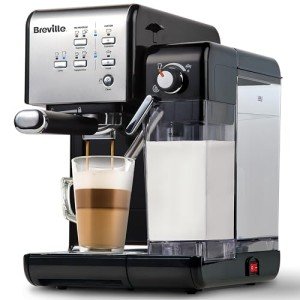The Rise of Home Espresso Machines: A Comprehensive Guide
As coffee lovers continue to seek fresh and tasty brews in your home, the appeal of home espresso machines has surged in current years. No longer just the domain of cafes and coffee bar, these machines empower people to craft barista-quality espresso beverages from the convenience of their cooking areas. Espresso Machines Under £200 will check out the different types of home espresso machines, their features, and factors to consider for choosing the right one. Furthermore, it will provide a choice of FAQs to help prospective buyers make informed choices.
Types of Home Espresso Machines
Home espresso machines can be classified into a number of categories based upon their mechanisms and user-friendliness. Each type has its unique functions, pros, and cons.
| Type | Description | Pros | Cons |
|---|---|---|---|
| Manual Espresso Machines | Requires the user to by hand control the developing process, involving methods like pulling a lever to produce pressure. | - Complete control over brewing procedure - Compact style | - Requires ability and practice - Time-consuming |
| Semi-Automatic Machines | Machine automates water flow and pressure, however the user still manages the dosing and period of the brewing process. | - Balance of automation and control - Versatile | - Learning curve for improving strategies |
| Totally Automatic Machines | Automates the whole developing process, from grinding to developing, often with programmable settings for customized beverages. | - Extremely user-friendly - Quick and hassle-free | - Less control over the brewing procedure - Higher price point |
| Pill or Pod Machines | Uses pre-packaged espresso capsules or pods to create coffee rapidly and quickly. | - Extremely simple to use - Minimal clean-up | - Limited flavor range - More pricey per cup than ground coffee |
| Super-Automatic Machines | Combines features of completely automatic machines with built-in mills, permitting users to brew whole bean espresso and milk-based beverages with one touch. | - All-in-one convenience - Ideal for milk-based beverages | - Often the most costly - Can be bulky |
Functions to Consider
When selecting a home espresso machine, possible purchasers must consider the following functions to guarantee they choose a machine that satisfies their needs:
Grinder Type:
- Built-in grinders can provide fresher grounds but might require more upkeep.
- Separate grinders enable more personalization of grind size.
Pressure:
- Look for machines that produce a minimum of nine bars of pressure, which is ideal for developing espresso.
Water Temperature Control:
- Machines with adjustable temperature settings permit much better extraction of taste from beans.
Milk Frothing Options:
- Consider whether you want a manual steam wand for frothing or an automatic milk frother for benefit.
Reduce of Cleaning:
- Machines with removable parts and self-cleaning functions significantly minimize cleanup time.
Size and Design:
- Ensure the machine fits easily in your kitchen area and lines up with your visual preferences.
Budget:
- Set a budget before beginning your search, as rates can vary considerably from affordable models to high-end machines.
Benefits of Home Espresso Machines
Owning a home espresso machine offers many benefits:
- Cost-Effective: Over time, developing espresso in the house can save coffee enthusiasts cash compared to frequent coffee shop sees.
- Customization: Users can explore various beans, grind sizes, and brewing methods to discover their best cup.
- Convenience: The capability to brew espresso at any time removes the need to go out to a café, especially helpful throughout late nights or mornings.
- Quality assurance: With a home machine, individuals have total control over the quality of active ingredients and brewing processes.
Downsides of Home Espresso Machines
Nevertheless, there are some downsides to consider:
- Initial Investment: High-quality espresso machines can be costly, needing a considerable in advance investment.
- Learning Curve: Mastering the art of espresso brewing can require time and practice, which might be intimidating for newbies.
- Maintenance: Like any device, espresso machines need routine cleansing and upkeep to make sure optimum efficiency.
FAQs
1. What is the very best kind of home espresso machine for beginners?
Answer: For beginners, a semi-automatic machine is typically recommended as it uses a balance between control and automation, permitting you to learn the basics without overwhelming intricacy.
2. How much should I invest in a home espresso machine?
Response: Entry-level machines can start around ₤ 100 to ₤ 300, while higher-end models can range from ₤ 500 to over ₤ 2000. It's necessary to set a budget based upon your expected use and preferred features.
3. Do I require a different grinder?
Response: While some espresso machines include integrated mills, buying a separate grinder enables for greater customization and makes sure better quality premises.
4. How often should I clean my espresso machine?
Answer: Cleaning frequency can vary by machine type, but it's generally suggested to clean the machine after each use and carry out deep cleanings weekly or regular monthly, depending on usage.
5. Can I make milk-based beverages with any espresso machine?
Answer: Not all machines come with milk frothing capabilities. If you enjoy drinks like lattes or coffees, look for a machine with a steam wand or automatic frother.
Home espresso machines are transforming the way coffee connoisseurs enjoy their precious brews. With numerous types and advanced features readily available in the market, there is something for everyone. Whether it's the joy of developing distinct dishes or simply enjoying the ideal shot of espresso, purchasing a home espresso machine can boost both the coffee-drinking experience and the quality of life for coffee enthusiasts all over. Similar to any financial investment, it is crucial to weigh the benefits versus the prospective drawbacks and pick a machine that seamlessly fits both your lifestyle and preferences.

